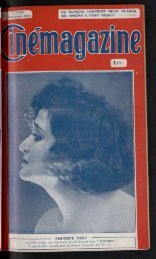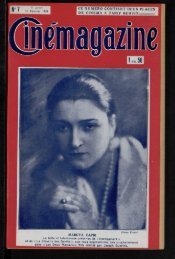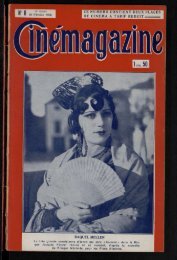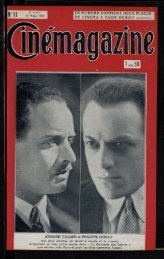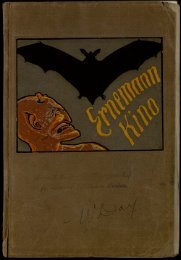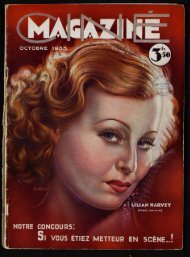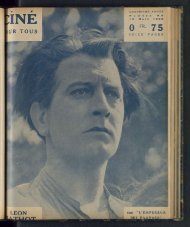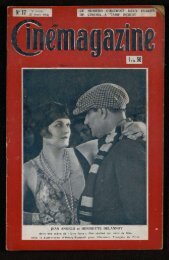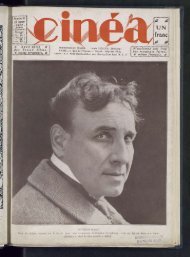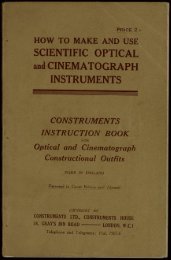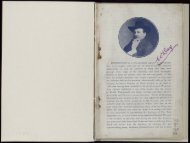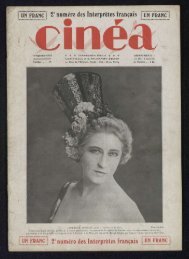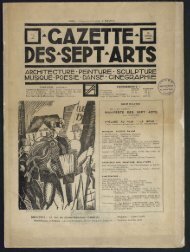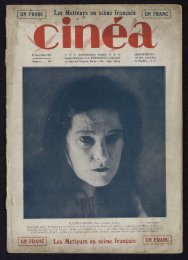Untitled
Untitled
Untitled
Create successful ePaper yourself
Turn your PDF publications into a flip-book with our unique Google optimized e-Paper software.
1\1111<br />
6 MODERN MAGIC LANTERNS.<br />
This type of lamp has long been obsolete in lanterns<br />
intended for serious work, but possessing, as it does, many<br />
disadvantages, it is nevertheless free from some defects<br />
which are inherent in modern forms. It<br />
needs a minimum of attention, is simple<br />
in construction, but its illuminating power<br />
is of the very smallest kind ; still, as it is<br />
occasionally met with, and as the precursor<br />
of modern patterns, it is worthy of<br />
mention.<br />
The introduction of<br />
petroleum and the in-<br />
A<br />
_<br />
Fig. 4. THE SCIOPTICON.<br />
,k, )1 --viraiiT-7"-- --,--t'N1111101N1<br />
11111111113<br />
,r ,<br />
Flo di<br />
111101 11111111<br />
l'IIIII I III<br />
=soli<br />
1 II, ' 1<br />
7.1<br />
Fig. I. THE SCIOPT1CON, SHOWING THE INTERNAL ARRANGEMENT.<br />
vention of the Sciopticon lantern by Mr. Marcy, of Philadelphia,<br />
improved these old-fashioned illuminants out of<br />
existence ; modern oil lamps for the lantern dating from<br />
what may be called the Sciopticon era.<br />
17<br />
OIL LAMPS. 7<br />
The Sciopticon, Figs 4 and 5, consisted of a reservoir for<br />
the oil, out of the top of which proceeded two tubes, each<br />
carrying a broad flat wick, the edges of which wicks were<br />
presented to the condenser ; the tubes, Fig. 5 u, were inclined<br />
towards one another at the top. Surrounding the wicks was<br />
a semi-cylindrical metal combustion or flame chamber, G,<br />
terminating in a chimney at the top. One end of the<br />
combustion chamber was closed by a metal lid carrying a<br />
small window for observing the flame, u; the other end,<br />
which went next the condenser, was of glass, G. The lamp<br />
and lantern were in this earliest form practically one<br />
instrument, the<br />
combustion chamber<br />
acting as the<br />
lantern body ; but<br />
the whole arrangement,<br />
although a<br />
very great advance<br />
over anything that<br />
had gone before it,<br />
possessed certain<br />
drawbacks, which<br />
have since been<br />
overcome. One of<br />
these was the presence<br />
of a strip<br />
down the middle<br />
of the disc which<br />
was not so brilliant-<br />
Fig. 6. THREEWICK LAMP.<br />
ly illuminated as the rest, a defect due to the use of two<br />
wicks. This and several minor faults having been removed,<br />
we have the modern oil lantern which is upon the market<br />
in many patterns, but all of which bear unmistakable signs<br />
of their parentage by the Sciopticon, although most of<br />
them now have three wicks and some four or even five,<br />
and the lamp generally is distinct from the lantern body,<br />
which was not the case with their predecessor. Fig. 6<br />
represents the Optimus three - wick lamp introduced by<br />
Messrs. Perken, Son, and Rayment. In this lamp four<br />
distinct currents of air are made to impinge upon the



